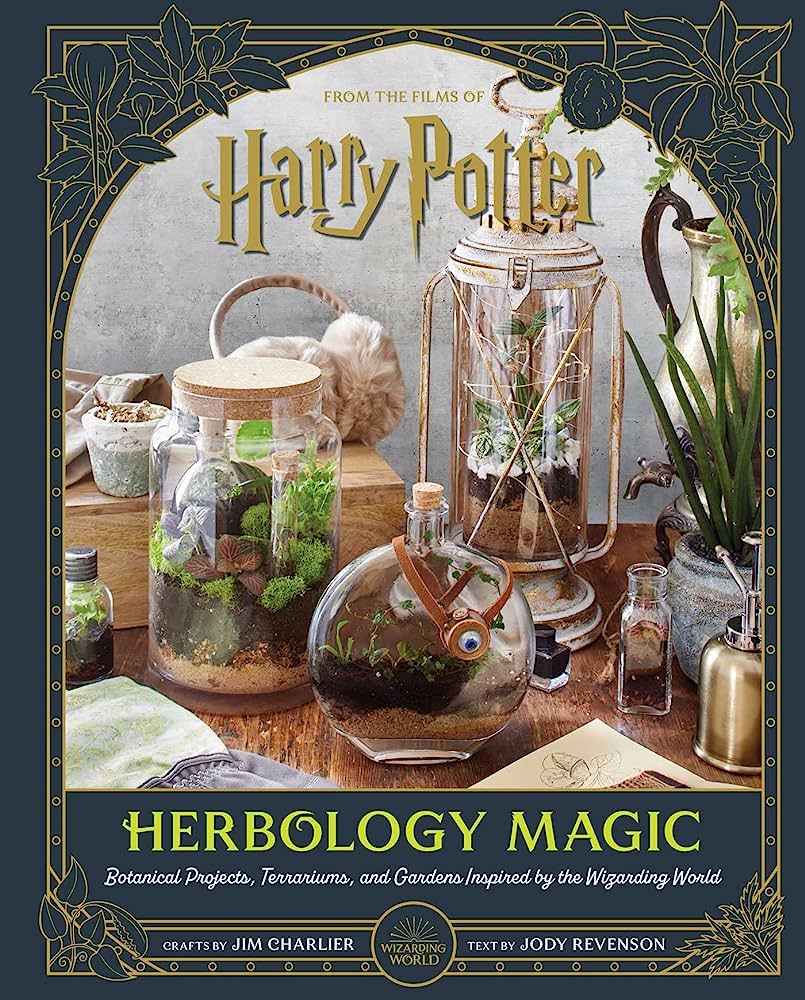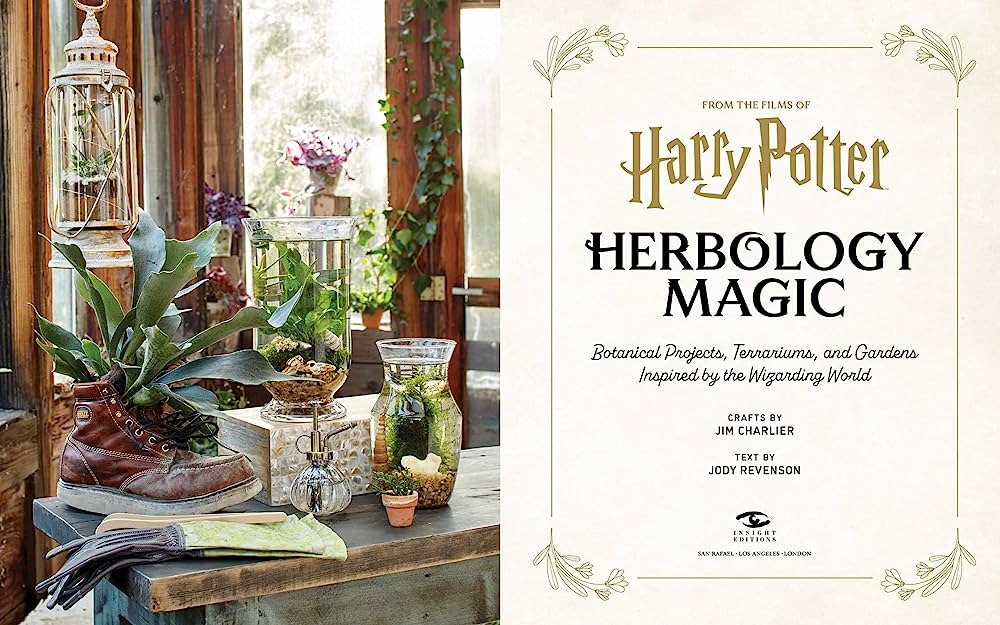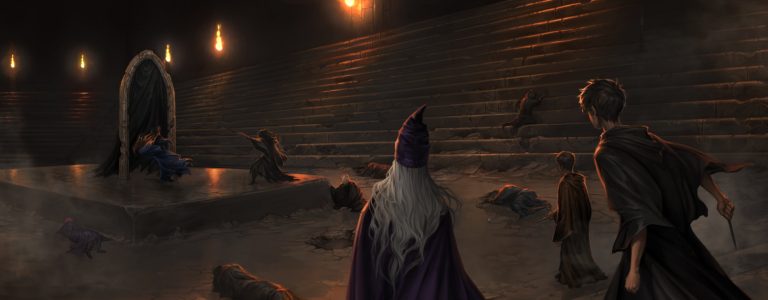Harry Potter Books: The Magical Creatures And Plants Of The Herbology Class
Welcome to the enchanting world of Harry Potter! Today, we’re going to dive into the captivating realm of magical creatures and plants found in the Herbology class. If you’ve ever wondered about the fascinating beings and flora that inhabit the wizarding world, you’re in for a treat. From mischievous pixies to majestic mandrakes, the Harry Potter books introduce us to a plethora of extraordinary creatures and plants that add depth and wonder to the wizarding experience.
In the Herbology class, students at Hogwarts School of Witchcraft and Wizardry learn how to cultivate and care for these fantastical beings and plants. It’s not just about memorizing textbook knowledge; it’s about developing a deep connection with the magical world that surrounds them. So, grab your wand and join us on this journey as we explore the secrets and mysteries hidden within the pages of the Harry Potter books. Get ready to be captivated by the magical creatures and plants that make Herbology class a truly enchanting experience. Let’s dive in!
In the enchanting world of Harry Potter, the Herbology class introduces students to a fascinating array of magical creatures and plants. From the mischievous Mandrakes to the awe-inspiring Whomping Willow, the books delve into the captivating world of Herbology. Students learn about the properties and uses of various plants like the Venomous Tentacula and the gillyweed, which plays a crucial role in the Triwizard Tournament. With vivid descriptions and intricate details, these books transport readers into a world where plants and creatures possess magical qualities. Step into Hogwarts’ Herbology class and discover the wonders that await!

Harry Potter Books: The Magical Creatures and Plants of the Herbology Class
Harry Potter is a beloved series of books that has captured the hearts and imaginations of millions of readers around the world. One of the most fascinating aspects of the Harry Potter universe is the magical creatures and plants that are introduced throughout the series. In the Herbology class, students learn about these creatures and plants and their magical properties. In this article, we will explore some of the most notable magical creatures and plants featured in the Harry Potter books.
The Mandrake
The Mandrake is a magical plant that plays a significant role in the Herbology class at Hogwarts School of Witchcraft and Wizardry. It is a small plant with a root that resembles a human baby. The Mandrake’s cry is said to be fatal to anyone who hears it, which is why students are required to wear earmuffs when handling them. Mandrakes are used in various potions and remedies, and their restorative properties make them valuable in the wizarding world.
The Mandrake’s significance in the Harry Potter books goes beyond its use in Herbology. In “Harry Potter and the Chamber of Secrets,” the Mandrake is instrumental in reversing the petrification of several students who have been attacked by the Basilisk. This highlights the plant’s powerful healing abilities and its importance in magical medicine.
Magical Creatures in Herbology
In addition to magical plants, Herbology also introduces students to a variety of magical creatures. These creatures play a vital role in the ecosystem of the wizarding world and often have unique properties and abilities. Let’s explore some of these magical creatures:
The Bowtruckle
The Bowtruckle is a small, tree-dwelling creature that resembles a twig. It is known for its fiercely protective nature over its home tree. Bowtruckles are often found guarding wand-quality trees, as they have a natural affinity for wood. They are incredibly difficult to spot due to their excellent camouflage, making them elusive and challenging to study. Bowtruckles are gentle creatures unless their home is threatened, in which case they can become quite aggressive.
The Niffler
The Niffler is a mischievous creature with a penchant for shiny objects. It has a long snout and a pouch on its belly, which it uses to hoard its treasures. Nifflers are attracted to anything that glitters or sparkles, making them perfect for locating hidden treasures. They are often used by treasure hunters and goblins to find valuable items. However, their mischievous nature can sometimes cause chaos and destruction.
The inclusion of these magical creatures in Herbology classes not only adds an element of excitement but also teaches students about the importance of magical creatures in the wizarding world. It highlights the interconnectedness of different species and the need for conservation and preservation.
The Whomping Willow
The Whomping Willow is a magical tree that features prominently in the Harry Potter books. It is a highly aggressive tree that attacks anything that comes near it, including people and animals. The tree’s branches thrash about violently, making it nearly impossible to approach or pass by without being injured. The Whomping Willow is introduced in “Harry Potter and the Chamber of Secrets” as a way to protect the entrance to the secret passage leading to the Chamber of Secrets.
Despite its aggressive nature, the Whomping Willow serves a purpose in the wizarding world. It acts as a natural barrier, guarding important locations and secrets. Its inclusion in the Herbology class allows students to study its behaviors and understand how to handle and control aggressive magical plants.
Plants with Unique Properties
In addition to magical creatures, Herbology class also delves into plants with unique properties. These plants often have magical properties that make them valuable in the wizarding world. Let’s explore some of these plants:
The Devil’s Snare
The Devil’s Snare is a magical plant that has the ability to strangle and trap its victims. It has a tendency to grow in dark and damp environments, such as the Forbidden Forest. Devil’s Snare is known for its ability to constrict its prey, making it a dangerous obstacle for those who encounter it. However, it can be defeated by exposing it to light and heat, causing it to release its grip.
The Venomous Tentacula
The Venomous Tentacula is a plant with aggressive tendencies and a taste for flesh. It has long, spiky tendrils that it uses to capture and ensnare its prey. The plant is known for its venomous bite, which can cause severe injury or even death. The Venomous Tentacula is often used in potions and remedies due to its potent properties.
In conclusion, the magical creatures and plants of the Herbology class in the Harry Potter books add depth and intrigue to the wizarding world. From the healing properties of the Mandrake to the protective nature of the Bowtruckle, these creatures and plants provide valuable lessons and insights into the magical realm. The inclusion of these elements in the Herbology curriculum not only enhances the students’ knowledge but also emphasizes the importance of preserving and understanding the magical creatures and plants that inhabit the wizarding world.
Key Takeaways: Harry Potter Books – The Magical Creatures and Plants of the Herbology Class
- Herbology is a subject in the Harry Potter books that focuses on magical creatures and plants.
- Students learn about various magical plants like Mandrakes, Devil’s Snare, and Venomous Tentacula.
- Magical creatures like Bowtruckles and Nifflers are also studied in the Herbology class.
- Understanding the properties and uses of these creatures and plants is essential for successful wizardry.
- Herbology class is taught by Professor Sprout, who is an expert in magical plants and creatures.
Frequently Asked Questions
What are some of the magical creatures featured in the Harry Potter books?
The Harry Potter books are filled with a wide variety of magical creatures that add depth and excitement to the story. Some of the magical creatures featured include the majestic Hippogriffs, which are part eagle and part horse, the mischievous house-elves who are known for their loyalty, and the terrifying Dementors that feed on human happiness. Other creatures include the adorable Pygmy Puffs, the intelligent and loyal phoenixes, and the mysterious and elusive unicorns.
Each magical creature in the Harry Potter books has its own unique characteristics and plays a significant role in the wizarding world. Whether they are helping or hindering the main characters, these creatures bring a sense of wonder and magic to the story.
What are some of the plants featured in the Herbology class in the Harry Potter books?
The Herbology class in the Harry Potter books focuses on the study and care of magical plants. Some of the plants featured in this class include the Mandrakes, which have restorative properties and a distinctive cry that can be fatal to those who hear it. Another notable plant is the Whomping Willow, a large tree with violent tendencies that guards the entrance to the secret passage leading to the Shrieking Shack. The Venomous Tentacula, a plant with aggressive and dangerous vines, is also studied in Herbology.
In addition to these unique plants, the Herbology class also covers more common magical plants such as the Gillyweed, which allows the user to breathe underwater, and the Devil’s Snare, a plant that can strangle anyone who comes into contact with it. The study of these magical plants adds an element of danger and excitement to the Herbology class.
How are magical creatures and plants important in the wizarding world?
Magical creatures and plants play a vital role in the wizarding world of Harry Potter. They not only add depth and fantastical elements to the story, but they also contribute to the overall world-building and provide opportunities for characters to showcase their skills and bravery.
Magical creatures often serve as allies or adversaries to the main characters, helping them overcome challenges or posing threats that must be overcome. The study and care of magical plants, as taught in the Herbology class, are essential for wizards and witches to understand and harness the power of these plants for various purposes, such as healing or defense.
Furthermore, magical creatures and plants often hold symbolic meanings and represent different aspects of the magical world. They reflect the rich mythology and lore of the wizarding world, making it a vibrant and captivating place for readers to explore.
Are there any dangerous magical creatures or plants in the Harry Potter books?
Yes, there are several dangerous magical creatures and plants in the Harry Potter books. For example, the Basilisk, a giant serpent with deadly venom and the power to petrify its victims, poses a significant threat in “Harry Potter and the Chamber of Secrets.” The Hungarian Horntail, one of the dragons faced in the Triwizard Tournament, is known for its ferocity and difficulty to defeat.
In terms of plants, the Devil’s Snare is a particularly dangerous one. It has the ability to strangle anyone who comes into contact with it, making it a formidable obstacle that must be overcome. The Venomous Tentacula, with its aggressive vines that can attack and injure, is another example of a dangerous magical plant.
These dangerous creatures and plants add suspense and excitement to the story, creating thrilling moments for the characters and readers alike.
How do magical creatures and plants contribute to the overall theme of magic in the Harry Potter books?
Magical creatures and plants are integral to the theme of magic in the Harry Potter books. They showcase the vast and diverse world of magic, highlighting the wonders and dangers that exist alongside the main characters’ journey.
These creatures and plants demonstrate the power and uniqueness of the wizarding world, emphasizing the importance of knowledge and understanding in harnessing and controlling magic. They also serve as a reminder that magic is not just limited to spells and potions but can be found in all aspects of the natural world.
By incorporating a wide range of magical creatures and plants, the Harry Potter books reinforce the idea that magic is not only a tool but also a living, breathing entity that interacts with the characters and shapes their experiences.

Mandrake Potting | Harry Potter and the Chamber of Secrets
Final Thoughts: Unleashing the Magic of Harry Potter’s Herbology Class
As we delve into the enchanting world of Harry Potter, we discover the captivating realm of magical creatures and plants in the Herbology class. These bewitching beings and extraordinary flora have captured the imaginations of readers and viewers alike. From the mischievous Mandrakes to the majestic Bowtruckles, and the elusive Devil’s Snare to the resilient Venomous Tentacula, the magical world of Herbology is a treasure trove of wonder and excitement.
Through the vivid descriptions and enthralling narratives found within the pages of the Harry Potter books, J.K. Rowling has transported us to a realm where these fantastical creatures and plants come to life. The meticulous attention to detail and the rich mythology surrounding each creature and plant make the Herbology class a truly immersive experience. Whether it’s learning about the healing properties of the unicorn horn or unraveling the mysteries of the Whomping Willow, every encounter with these magical entities is a journey into the unknown.
But the allure of Herbology extends beyond the fictional realm. The lessons we can learn from the Herbology class are deeply rooted in our own world. Just like the characters in the Harry Potter series, we too can find inspiration and wisdom in the study of nature and its magical creations. The resilience of the Mandrakes teaches us the importance of perseverance, while the nurturing care required for the growth of magical plants reminds us of the value of patience and dedication.
So, let us continue to explore the wonders of Herbology, both in the pages of the Harry Potter books and in our own lives. May we never lose our sense of awe and curiosity, and may the magic of these extraordinary creatures and plants continue to ignite our imaginations. Let us embrace the enchantment of Herbology and allow it to guide us on a path of discovery and wonder.






